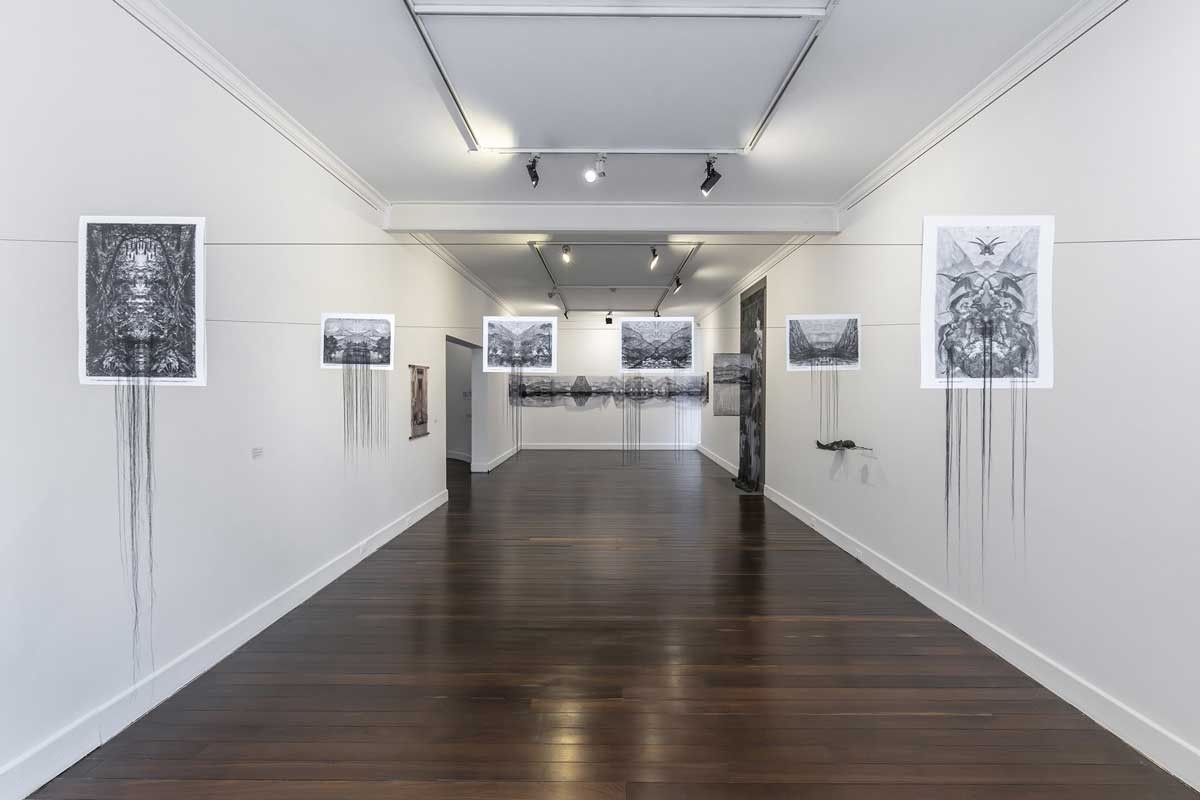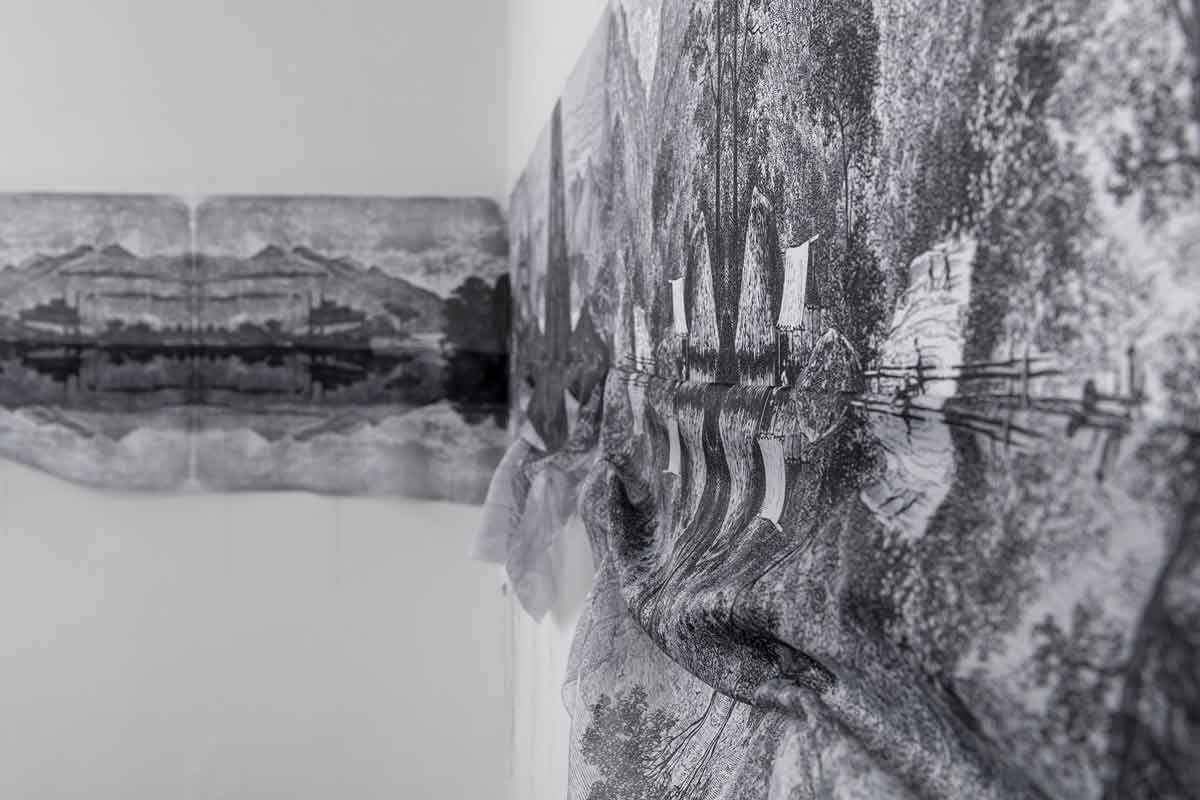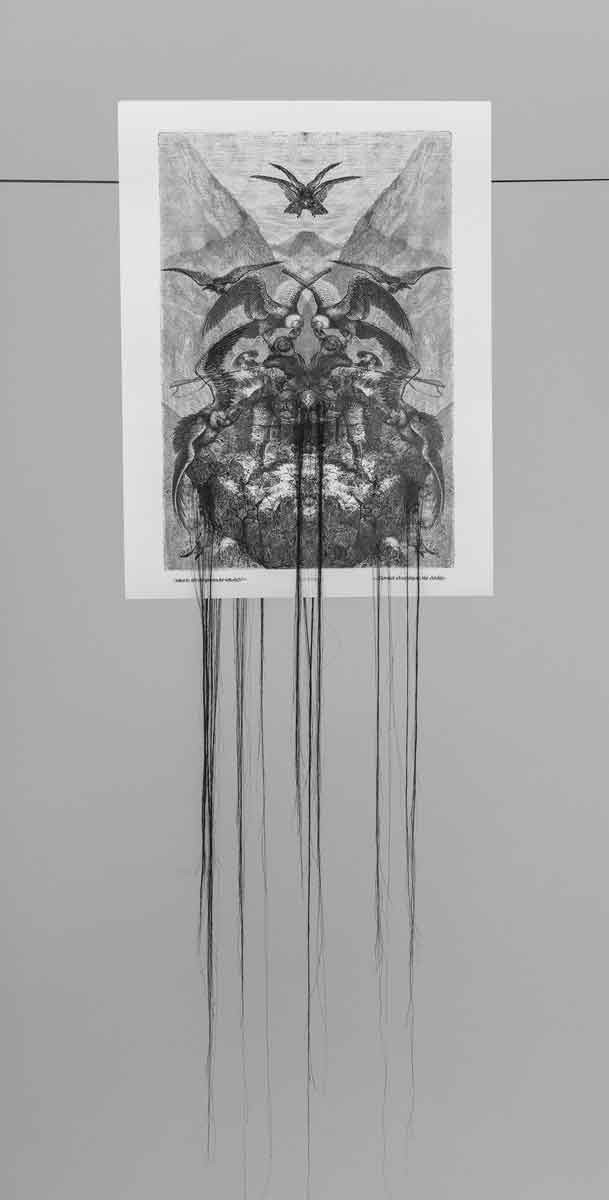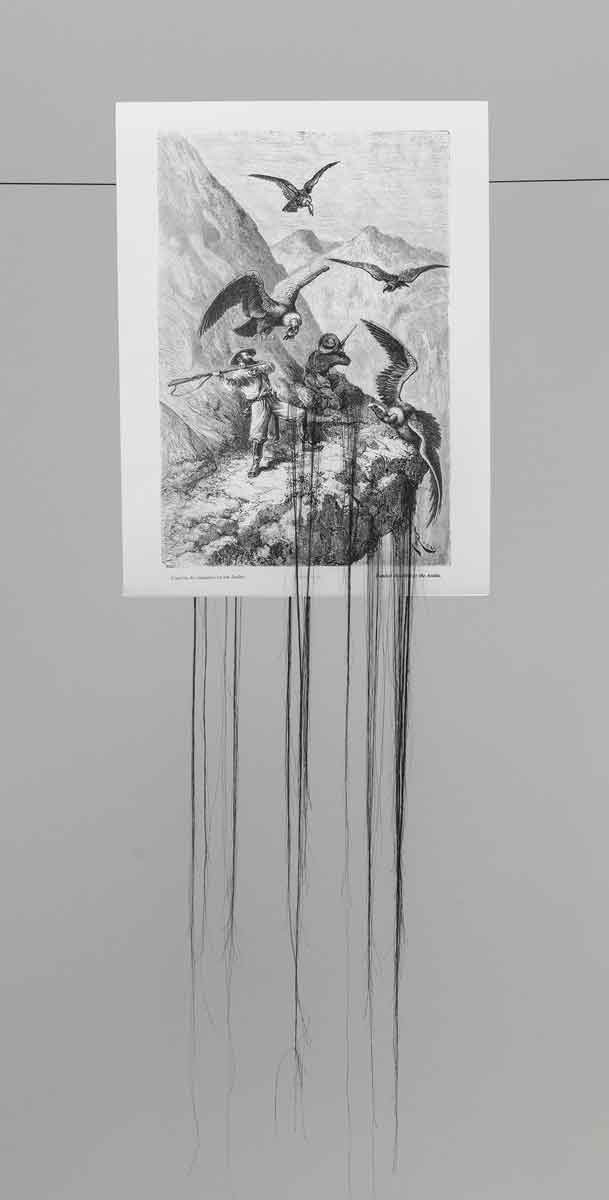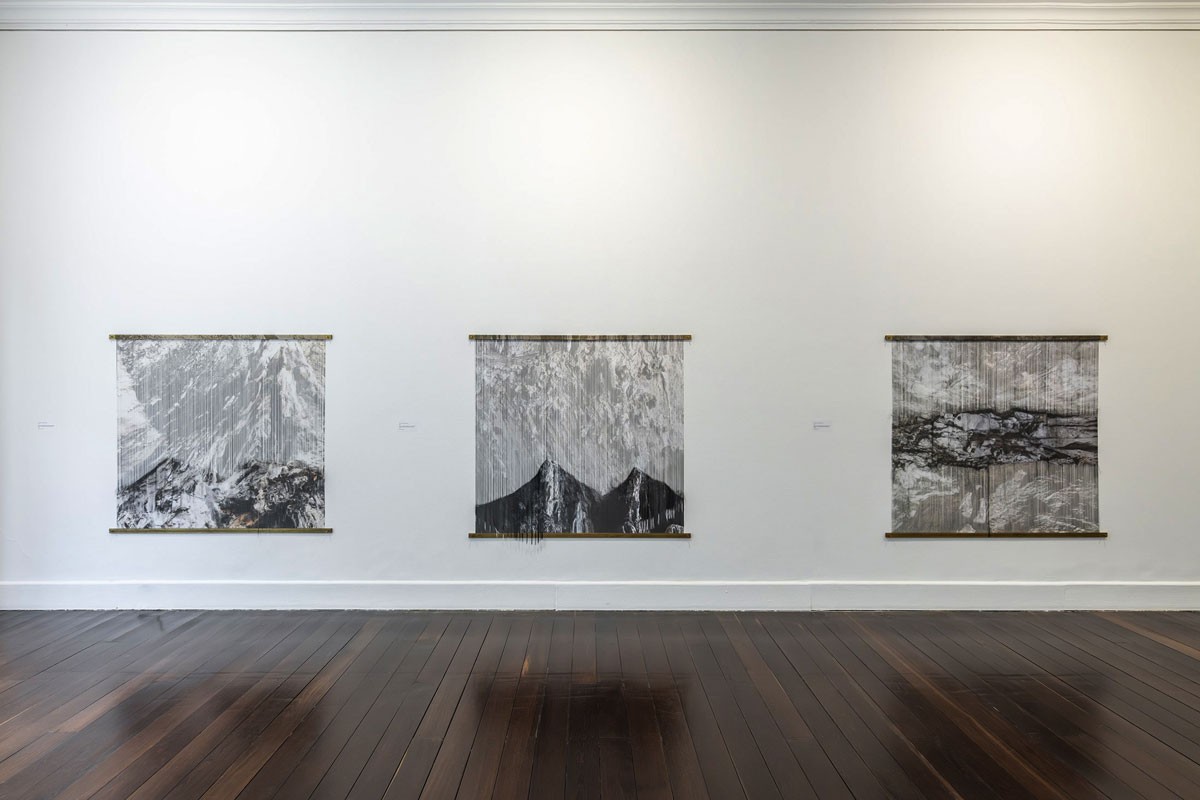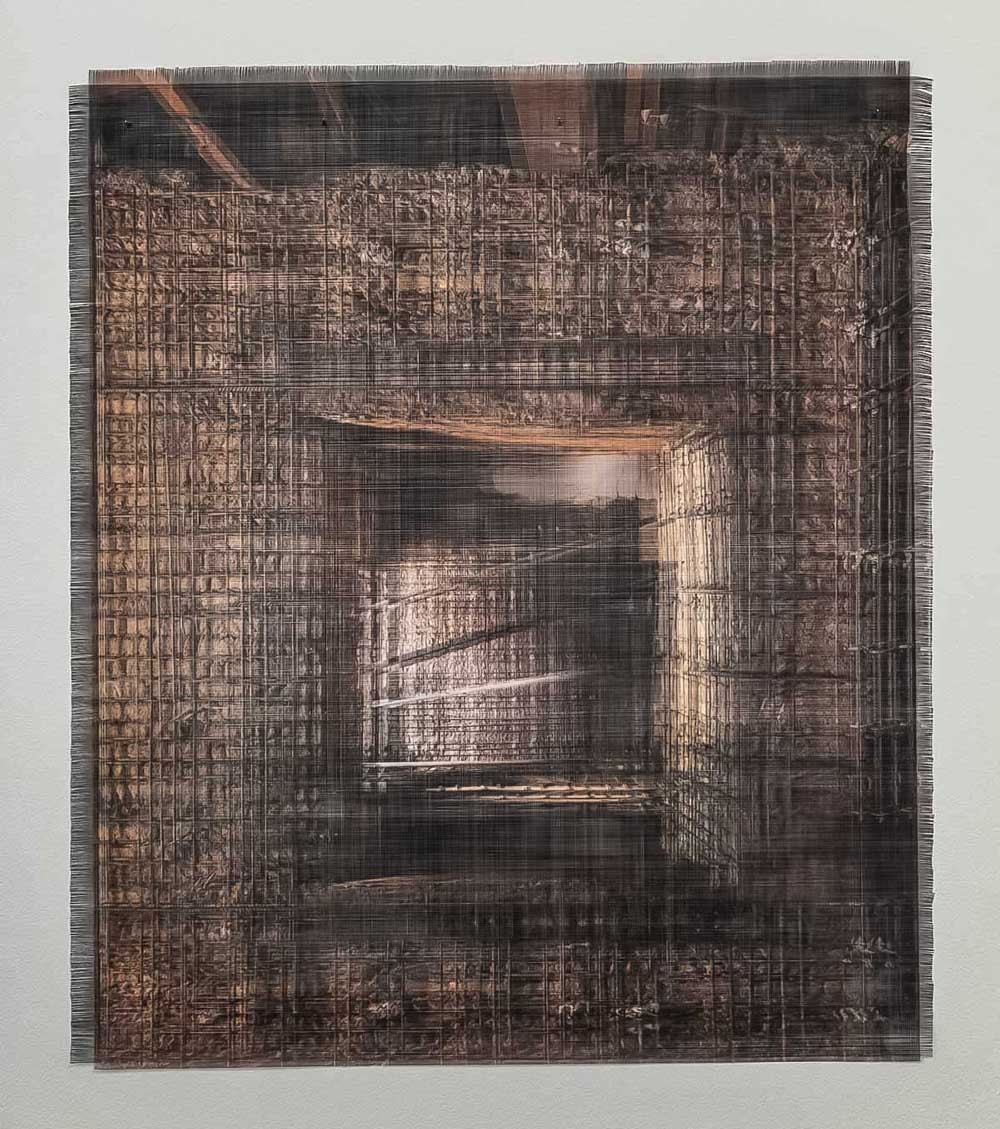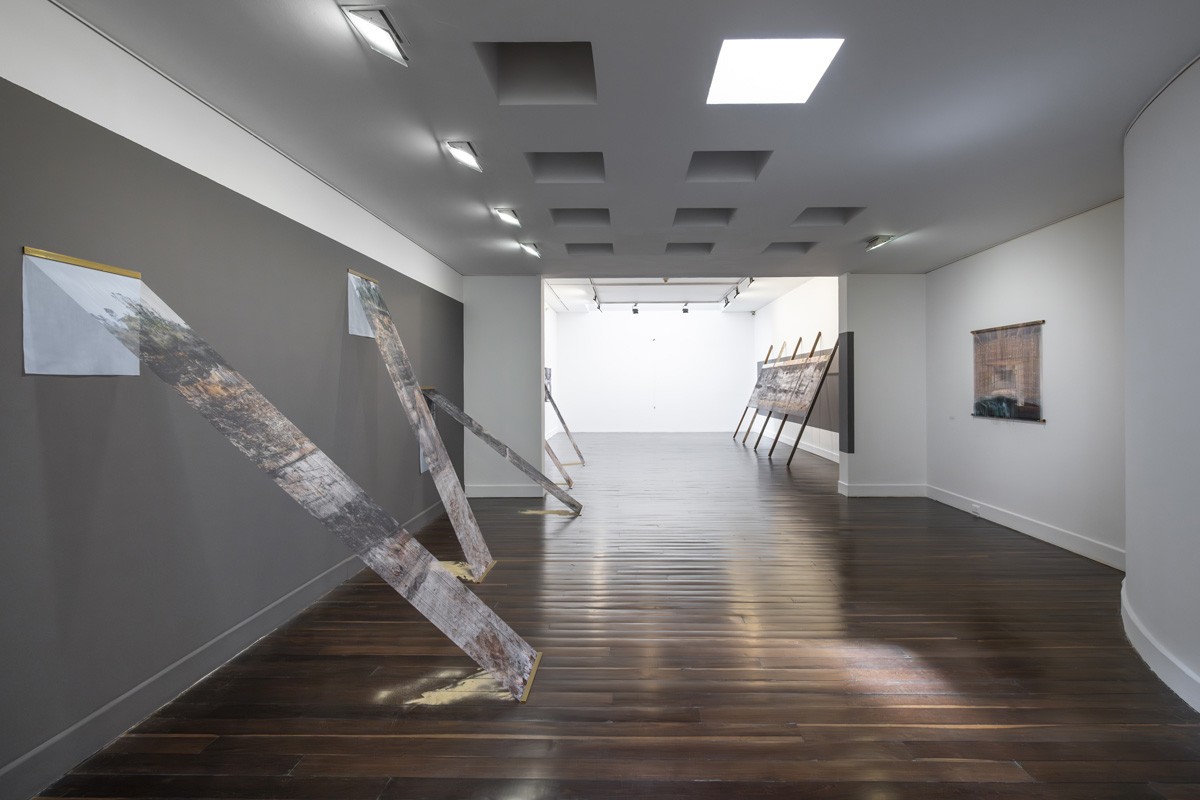Trama y Urdimbre_América y Horizontes (after Carlos Rojas)
Un-Woven / Des-Tramo, Leyla Cárdenas at Casas Riegner
“Confusions of contemporaneities reveal the untimely and speculative nature of photological knowledge.” –Dan Hicks, 2020
The pure, pristine, uncontaminated landscape does not really exist. As soon as we begin looking, a transformation is already taking place through the embodiment of the gaze in space. But the space isn’t simply the place we see in the photographic present, or a container with a definite shape; it is always irregular, shrinking and expanding, dissolving. The presence of the trace is not the allegorical effect of ruins, but the artifact of time itself. In Leyla Cárdenas’ ‘Un-Woven’, the unweaving of historical images is a form of photological knowledge that reveals, according to archaeologist Dan Hicks, “a landscape that is made up of places, made visible only after an interval of time”. The photological is a visual mode in which the photograph is neither a still-image, nor a remnant or trace, but an unfinished, still ongoing, sensorial effect. But what exactly do we see after this process of sublimation, through which the ink and the fabric become indistinguishable from each other at the molecular level? The final result is a memory of places. An archive of dislocation, across both time and space.
‘The Simon Bolivar steamship on the Magdalena River’ is one of several engravings published in 1869, in French botanist Charles Saffray’s volume “Fabulous Colombia’s Geography”, a European traveler’s account of journeys through the Nueva Granada in the 19th century. Taking these images as a point of departure, Cárdenas’ unweaving makes us subtly aware of the romanticism inherent in the ideology of the colonial landscape, but not in a traditional sense: It unmasks the European attempt to flatten the landscape into a grid of both interpretation and exploitation that freezes time. The landscape, however, isn't an inert matter without boundaries, but an interface of interaction between human agency and nature. “Un-Woven” exposes an asymmetrical topography, in which geological features, environmental violence, traces of human occupation and the territory form complex assemblages that are not simply stacked in layers; it’s a durational time, in constant transformation.
Leyla Cárdenas unweaves the images in two different directions: The vertical warp held stationary on the loom, as the arrow of time, and the horizontal weft, drawn across the warp, as the shape of space. But how do we know that space is pressing downwards and time is moving forward and backward? In fact, we don’t, but the fragile and unstable threads make the composition vibrate, striate and dissolve, to the point that only the photological aspect remains, which, as Hicks elaborates, “casts light, discovers landscape, builds memory, generates self-knowledge and reveals appearance.” In this moment of reflection, the phenomenon of change in the path of light, a trace emerges, not as a consequence of the dissolution, but as raw material. What Cristián Simonetti calls ‘feeling forward into the past’, becomes lived experience in this fleeting moment of confusion, as contemporanities collide, titillating like the Magdalena River, on a fresh morning in 1861, when its silky surface concealed many latent dangers.
And the surface remains a site of fundamental operations for Cárdenas: Splitting the images of ‘Un-Woven’ into the warp and the weft, containing time and space as vectors, is a nod to the two-dimensional axes in the photographic composition, but the third axis of depth and movement is already embedded in perception; the artist tells us, “When you peel away the first layer of space, there’s already so much depth.” It is precisely this depth that holds the trace, the memory, and the photological, from disintegrating into mere vectors. Yet in that moment, when the depth materializes, in the contours of the light, the grid of the Cartesian space has already disappeared; we are ankle-deep in the viscous, indeterminate, corrosive, substance of time. This time of memory has no beginning or end, instead it is speculative, durational and transformative. But how long does time last? Archaeology has asked this question for two centuries. The landscape answers firmly: Time is a fiction of linear measurements.
Arie Amaya-Akkermans

